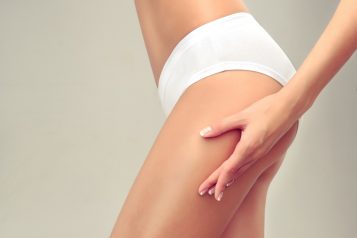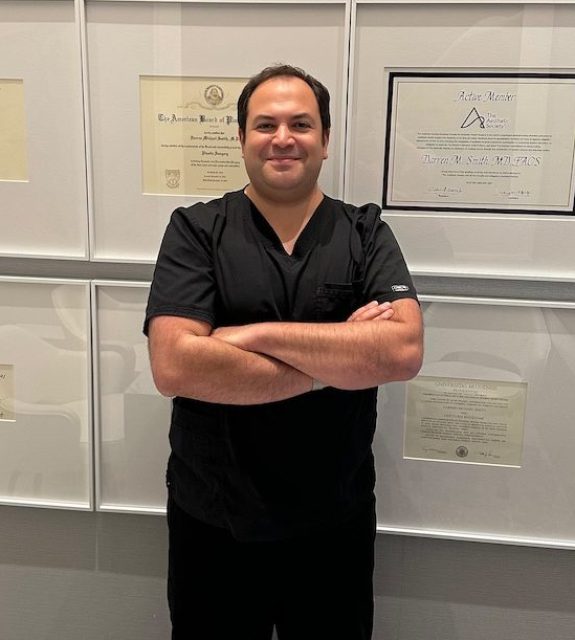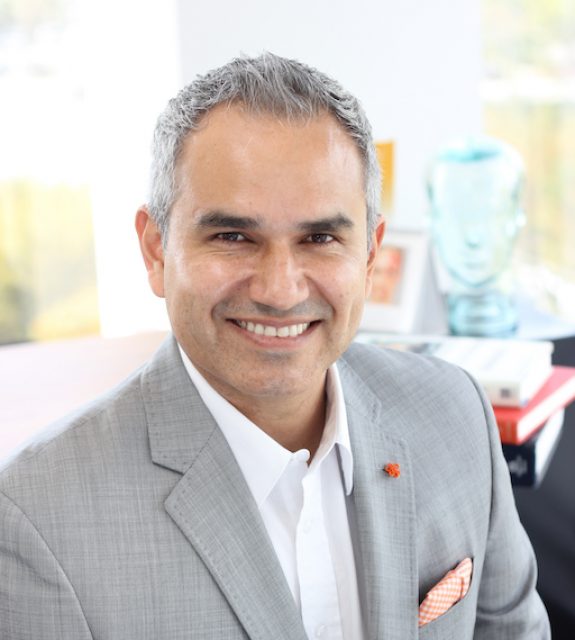When you're considering a breast augmentation, you might have questions regarding the procedure, the best time to get it done and implant types. Haute Beauty caught up with Dr. John Layliev who answered our questions and dished on everything you need to know about breast augmentation.

Haute Beauty: Are there any new techniques you offer for breast procedures?
Dr. John Layliev: The only thing I can say that probably not too many people offer is subfascial breast augmentation for patients that workout heavily and don't want any type of animation deformity. And also like hybrid breast augmentation with fat and implants.
HB: Who are the best patients for subfascial breast augmentation?
JL: The right patients for this would be patients that are very fit and work out heavily and, you know, have strong pec muscles and, you know, the typical sub pecs of augmentation will give them a pretty nasty animation deformity. Therefore, subfascial breast augmentation and placing the implants along with some glamour lipo with fat grafting when they're very thin, are several options for these types of patients.
HB: Ok, what about pregnancy and then whether you should be getting your breasts done before or after if you're planning to want to have a baby sometime soon. What would you recommend?
JL: Yes, I would definitely recommend waiting until after because of the breast shape and the size changes after pregnancy. I would wait at least six months after being finished with breastfeeding or six months after, you know, if you're not breastfeeding, six months after pregnancy. Now, you know, if it's someone younger, you know, they're in their 20s and they want to be pregnant who knows when, and not even married, I mean, that's okay. There's no reason not to get a breast augmentation. They just need to understand that with pregnancies and breastfeeding things will change and they may need a corrective procedure to make things perfect or to make things as close to perfect as possible again, you know. So if someone has two kids and they're thinking about having a kid in two years. It's not like “no you can't have a breast augmentation,” they just need to understand that things will change and that they may need touch-ups, which likely means a lift.
HB: And what about breast reductions? If you're, you know, considering pregnancy, should you still do that before or after?
JL: So the quote of literature is about 20% of patients can have issues or difficulties with breastfeeding after a breast reduction. And that's a quote of literature. I think we've seen a lot less than that. So my recommendation on that would be, most women get a breast reduction because there are having pain. A lot of it is medically necessary and actually covered by a lot of insurance plans and we do that a lot here, but so I don't think necessarily have to wait after pregnancy to get a reduction, especially medically necessary cases, I think that would help that with the pains that they're having. So if it's a cosmetic type of thing, like a lift, then yeah, I would wait until after because you know, you'll need it again, so might as well just get one procedure, but if it's a medically necessary type of thing where patients having back pain, neck pain, shoulder pain then I wouldn't wait. As long as they understand that in rare situations, they may have some difficulty breastfeeding. Then, I wouldn't wait until after pregnancy in those cases because you want to treat their current symptoms of pain.
HB: Have you ever or how do you deal with situations where you should be telling a patient that you can no longer do the breast augmentation because, you know, it would go in a bad direction?
JL: So a big part of us as plastic surgeons is to educate patients on what's safe for their body type. So there's a spectrum. There's a range of what's safe to fit on somebody's chest wall. And when you're on the upper portion of that spectrum then you’re definitely at risk of having your implant bottom out or have an implant malposition is higher in the future. But there comes a point where if they're asking for some overly excessive size, where I would just, you know, educate them and say that that's just not the right thing to do for their body habitus and for their chest size because I'm basically guaranteeing them a complication, which I don't want to deal with and they don't want to deal with.
HB: How would a patient prepare for an initial consultation?
JL: I don’t mind when patients bring photos in, honestly. What we do in my office, we use a vector 3D imaging system in order to show them what various implants would look like on their bodies through a 3D simulation. So I think that's much more accurate than bringing in a picture of someone on Instagram or social media, only because you don't know what that breast size started with and their breast anatomy or chest anatomy is different. So I don't, you know, they can bring pictures and sure it's helpful to see to some degree, but it doesn't really make too much difference because when we use our 3D imaging software, it gives a pretty good idea for the patient what to expect afterward. And then based on what they see, they can go higher, they can go lower, and then they can, basically, we can choose together make an educated decision together.
HB: That's great. I feel like images from social media are unrealistic.
JL: I mean, that's one thing, but at the same time like all those pictures you are seeing are like push-up bras, you know, implants are up by the clavicles and, you know, I want the patient to feel comfortable with no clothes as well. Not just with the bikini on, right? So the 3D simulation allows you to see what the implants will look like with no calls. So I think that's more important.
HB: How does someone know it's time to consider a breast lift?
JL: Well if they're areolas are pointing down. Okay? That's the most common indication for someone to begin thinking about a breast lift. Also, if their whole breast architect, you know, if their whole breast mound is sitting way low on their chest, then that's a good time to think about breast augmentation with a lift.
HB: Lastly, how do you decide which implant to use each time?
JL: So I stay away from textured implants over the last few years just because of all the news out. There really isn't much of an indication for cosmetic breast procedures to be using textured implants anymore with the latest generation of smooth implants that we have. So I don't use textured implants. That's one. Two, the various profiles, specifically low profile, moderate profile, high profile or extra high profile, all those implants that I select based on the dimensions of the woman's chest and specifically how wide their base width is. So base width is, you know, quote-unquote, how wide their chest is to fit the implant into so that implant can fit on their chest wall and look appropriate. So, I mean you can pick a high-profile implant, but it looks narrow and looks like a little baseball on someone's chest. It looks horrible, right? Or you can pick a really large implant, it could be a 600 implant, but it doesn't have much projection and it's really wide and looks like, you know, like half the boob is in the armpit and that's really uncomfortable. So it's really important to pick implants based on the chest Dimensions so that they're comfortable, yet augmented.
























